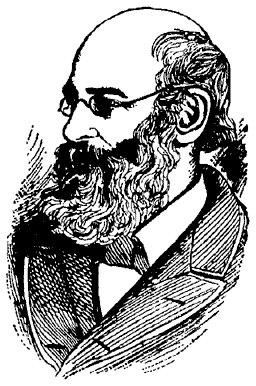[Newspaper]
Publication: The Gazette
Stevens Point, WI, United States
vol. XVII, no. XLVIII, p. 10
WORKER OF WONDER
THE MARVELLOUS INVENTIONS
OF R. E. HOUSE
Sending Roman Characters by Telegraph
Has Marked His Debut in the Electrical World - His Automatic Sound System
The scientific achievements of Royal E. House, whose death has just been recorded, occupy a prominent place in the gallery of invention. Born in Rockingham, Vermont, Sept. 9, 1814, he moved, while yet young, with his parents to Choconut, a small hamlet in Susquehanna county, Pennsylvania, a point farther remote from civilization at that date than is Alaska today. His inventive talent first manifested itself in the construction of a submerged water wheel for a saw mill, which embodied a principle since used in many forms, and known as the "scroll wheel." Early in the forties he went to Buffalo, N. Y., with the design of studying law with a relative of his family residing there, but having gained access to a limited number of scientific books, he became interested in electrical researches, and these soon became the absorbing passion of his life. Returning to his home he conceived and worked out in his own mind, without the slightest knowledge of what had been done by others, the scheme of an electric telegraph. From the outset his design was to produce a record in printed Roman characters, and all his efforts were devoted to that end. Mr. William Ballard became interested in the invention, and furnished House with the necessary means to perfect the invention. When completed, which was not until several years afterward, it proved to be a perfect marvel of mechanical skill and ingenuity, and was demonstrated to be capable, under favorable conditions, of printing messages in plain Roman characters at the rate of more than fifty words per minute. Capitalists ultimately became interested in the scheme, and between 1847 and 1855 an extensive range of telegraph lines was erected, extending from New York along the seaboard to Boston and Washington, and west as far as Cleveland and Cincinnati, on which the House instruments were employed with great commercial success. Many original details of the line construction were designed and carried out by Mr. House, and, viewed in the light of later knowledge, they stamp him as an electrician whose practical attainments were vastly in advance of his time. He preferred to employ stranded wires of great conducting capacity, insisting that a much higher speed of transmission by his system could be obtained in this way that by means of solid wires of equal resistance, a theory which was scouted by electricians for nearly half a century, but which is now universally admitted to be true.
 |
| ROYAL E. HOUSE. |
He designed and constructed the first successful long span river crossing at Fort Lee, in 1849, carrying two piano wires on masts 400 feet above the Hudson river, in a span of over 4,000 feet; thus for the first time establishing permanent telegraphic communication between New York and Philadelphia. He designed an insulator having a glass screw-socket to engage with a thread cut upon the top of the pole. When the glass manufacturers insisted that it was impossible to make it he at once designed a machine for performing the operation, which, in its essential principle, is in use to this day. By his wonderful powers of observation and invention he was able to overcome every difficulty as it came up, and no electrical or mechanical problem ever appeared to baffle him. Suits were brought in 1849 by the owners of the Morse inventions against companies using the House machine, alleging infringement of their patents, but the combined technical and legal skill of Counselor George Gifford, the forensic pyrotechnics of Rufus Choate, re-enforced by the consummate expert knowledge of House himself, were to formidable an opposition to be readily overcome, and in June, 1850, in the United States circuit court, in the District of Massachusetts, Judge Woodbury announced his famous decision, refusing an injunction; a most notable victory for the eminent inventor and his associates, especially relished by House in view of a remark which had once been made by Francis O. J. Smith, one of the principle owners of the Morse patents, that he could drive his old Durham bull from New York to Boston with a message tied to his horns quicker than it would ever be sent by House's printing telegraph.
After the general consolidation of competitive telegraphic interests, which took place about 1860, the House apparatus gradually went out of use, the simplicity and cheapness of the Morse system and more especially he vast improvement in the skill, rapidity and accuracy of the operators over those of early days, rendering the use of the latter more profitable to the companies. Mr. House himself, in possession of a competency acquired from his invention, removed to Binghamton, N. Y., where he lived in comparative retirement for many years. In 1865 he appeared at the patent office with a most elaborate and ingenious system of automatic sound telegraphy, obviously the fruit of years of laborious study, and embodying features which have proved of extraordinary value in other systems of intercommunication, but which, as a whole, never met with the acceptance of the commercial telegraphic interests of the country.
